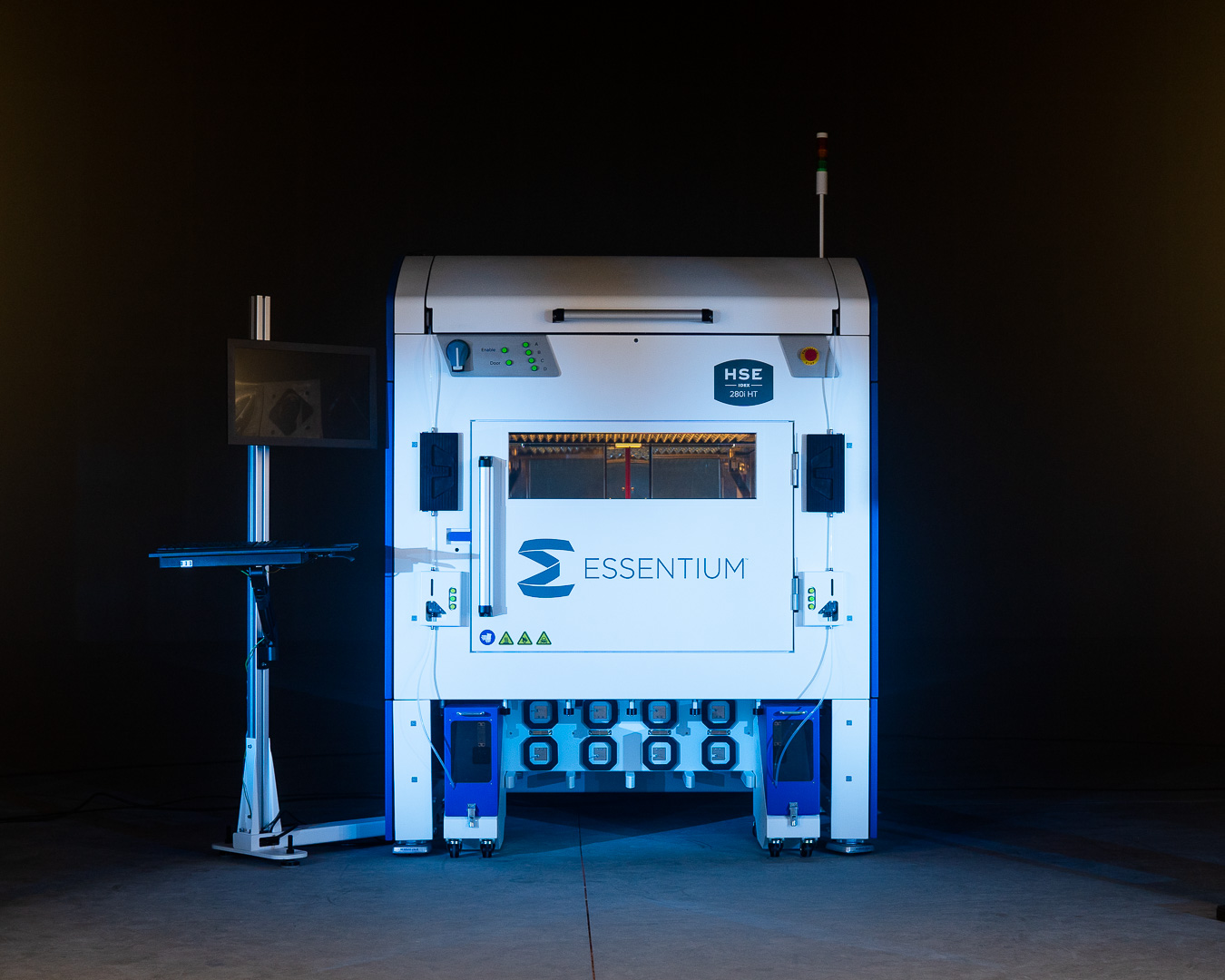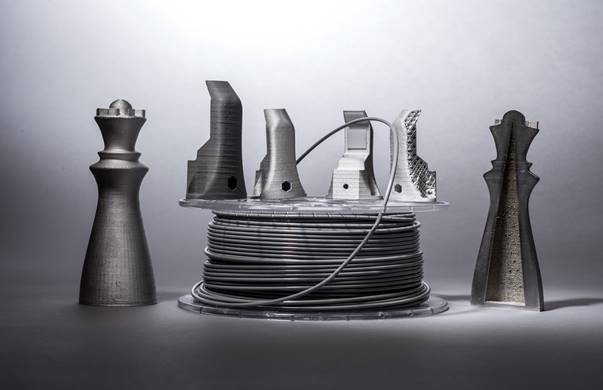In its recent SPAC announcement, Essentium let slip that it was expanding from a polymer additive manufacturing (AM) company into metals. The firm has now provided details about what this process may entail, saying that its new metal AM platform will be integrated with the Essentium High Speed Extrusion (HSE) technology.
The project is being developed by the EssenitumX team, a sort of Skunk Works within the business. Without elaborating on how this integration will look, we can guess that it might involve some sort of metal-infused filament, similar to what is offered by Markforged, Desktop Metal, 3DGence and others. This type of bound metal extrusion (BME) involves 3D printing a part made up of metal held together by a binder that is then dissolved and burned out in a kiln, resulting in a dense metal part.

Essentium’s HSE 280i HT 3D printer. Image courtesy of Essentium.
Elisa Teipel, Ph.D., Chief Development Officer of Essentium, said, “By leveraging our materials-first heritage, we are creating a unique manufacturing method. Our metal AM platform will deliver improved throughput for high part quality, and it will have the potential for broad-scale use in major industrial markets, including automotive, aerospace and defense. We expect our metal AM platform to empower manufacturers to innovate faster and stay ahead despite unprecedented challenges in today’s markets.”
This is news that is sure to impact the stock of Essentium’s special purpose acquisition partner, Atlantic Coastal Acquisition Corporation (NASDAQ: ACAH). What Essentium brings to the table is a much quicker extrusion technique. The company also noted that it has “five patents to date with three additional patents pending”, which are “expected to provide energy-efficient deposition, decrease porosity, and minimize warpage during a build”. Moreover, the company said that parts will require minimal post-processing and will be comparable to castings and forgings.

BASF’s Ultrafuse 316L – Metal filament for 3D printing stainless steel parts
Because Essentium is supported by German chemical giant BASF, both in its SPAC and in previous investments, we can likely expect its involvement in this product. That’s because BASF is developing a line of metal filaments, beginning with stainless steel, for performing on any qualified desktop machine. Recently, this has come to include BCN3D, MakerBot, and Ultimaker. Based on even my rough experience with metal filament, I can see that there is a great amount of potential for producing metal parts with low-cost systems. With a perfected workflow that works within the limits of the technology, it would be easy to 3D print important items using metal filament.
We’re still waiting for any of these variations on BME to really hit the market in a big way. Markforged’s Metal X has been on the market for over three years and we’ve seen a number of case studies, including for making spare parts at U.S. military bases, tooling for oil and gas, parts for automotive spot welding, and more. However, we have yet to see, say, a massive print farm made up of these machines churning out low-cost metal parts.
This may change as more and more businesses become comfortable with the technology or BME might be reserved for tooling and other less critical, but still important items. Perhaps Essentium will change this by introducing HSE to the mix. Regardless, we’re only at the beginning of the implications for this type of technology and we’re likely to see major changes in the next several years.
However, we can also speculate that, because it involves “energy-efficient deposition” with minimal post-processing, that this isn’t a form of BME at all, or a new variety. The company has also developed a FlashFuse process, which relies on electromagnetic elements to Joule heat the interfaces between layers, activating nanoparticles within the polymer filament and joining the layers together with a strong bond. So, it’s possible that this technique is being applied to metals in some way.
Subscribe to Our Email Newsletter
Stay up-to-date on all the latest news from the 3D printing industry and receive information and offers from third party vendors.
You May Also Like
Precision at the Microscale: UK Researchers Advance Medical Devices with BMF’s 3D Printing Tech
University of Nottingham researchers are using Boston Micro Fabrication‘s (BMF) 3D printing technology to develop medical devices that improve compatibility with human tissue. Funded by a UK grant, this project...
3D Printing Webinar and Event Roundup: April 21, 2024
It’s another busy week of webinars and events, starting with Hannover Messe in Germany and continuing with Metalcasting Congress, Chinaplas, TechBlick’s Innovation Festival, and more. Stratasys continues its advanced training...
3D Printing Webinar and Event Roundup: March 17, 2024
It’s another busy week of webinars and events, including SALMED 2024 and AM Forum in Berlin. Stratasys continues its in-person training and is offering two webinars, ASTM is holding a...
3D Printed Micro Antenna is 15% Smaller and 6X Lighter
Horizon Microtechnologies has achieved success in creating a high-frequency D-Band horn antenna through micro 3D printing. However, this achievement did not rely solely on 3D printing; it involved a combination...





























